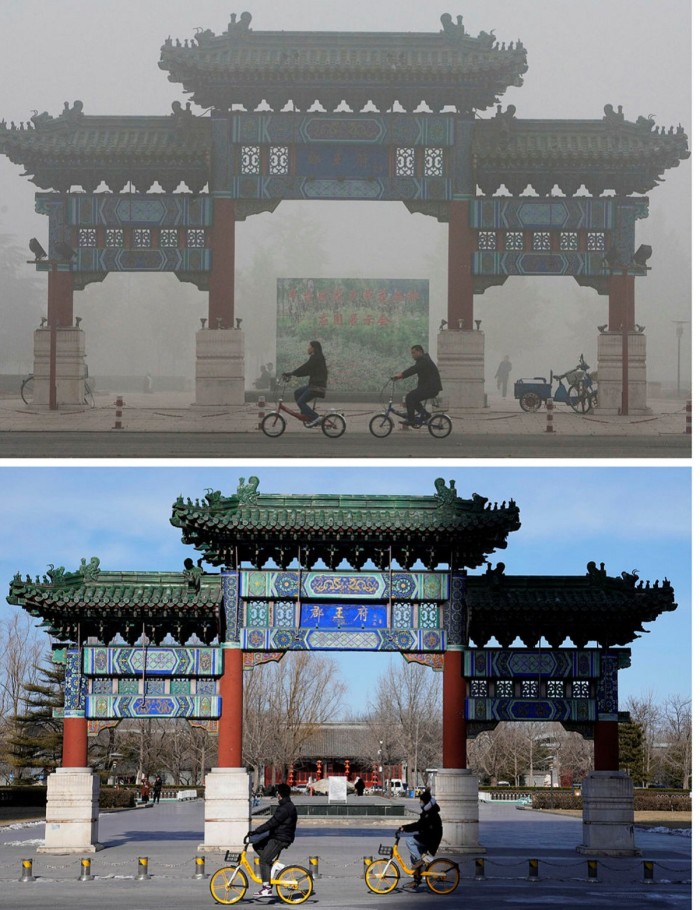China makes Olympian effort to cut pollution but remains short of WHO standards

Simply sign up to the Climate change myFT Digest -- delivered directly to your inbox.
Since Beijing hosted the 2008 summer Olympics 14 years ago, China has taken steps to improve the air quality in its cities, despite remaining the world’s largest emitter of greenhouse gases.
While the country has a long way to go and continues to build the coal-fired power plants that contribute to the deadly pollution that is the leading cause of global warming, it has made a quantifiable improvement in the past decade.
Starting in 2014, when premier Li Keqiang declared a “war against pollution”, there has been a 40 per cent reduction in the country’s emissions, according to satellite data analysed by the Energy Policy Institute at the University of Chicago.*
This amounts to more than three-quarters of the total global decline during that period in air pollution, referred to as particulate matter, or suspended dirt and soot that can pass through the lungs into the bloodstream.
Although there were improvements made to air quality in preparation for the 2008 Summer Games, as power plants and factories were closed temporarily, these radical measures were shortlived. Pollution returned to previous levels following the Games and peaked in 2013.

However, the co-host city for the 2022 Winter Olympics, Shijiazhuang, the capital of Hebei province, has reported a 49 per cent decrease from the 2013 peak, based on data provided by China’s National Air Quality Monitoring Network.
According to Michael Greenstone, the co-author of a report on China’s efforts, a former adviser to Barack Obama and the creator of the Air Quality Life Index, the advent of a national air quality monitoring system has been crucial for ensuring better reporting of emissions across the board.
“Local governments often had opportunities to influence the reported pollution concentration; when a lot of those opportunities were removed by the central government, that raised the bar on the quality of readings while reducing opportunities to report concentrations lower than they actually were,” says Greenstone, who is also director of the Energy Policy Institute at the University of Chicago.
“A great benefit for polluters is something I refer to as ‘the zone of confusion’. A very successful part of China’s war on pollution has been to try and remove that zone of confusion and replace it with reliable information so it’s clear which places to target and which polluters to target,” he added.
While China has met its national air quality standard, its pollution levels still exceed World Health Organization guidelines, the Air Quality Life Index notes. When compared with Los Angeles, the most polluted city in the US, Beijing is still three times more polluted.
“If China were to meet the WHO guideline, the average Chinese citizen could expect to gain an additional 2 years of life expectancy, on top of the recent gains. Residents of Beijing could gain an additional 3 years,” the group said.

Nonetheless, Beijing residents are breathing air that is half as polluted as it was during its Summer Olympics.
Other cities have seen changes also: Baoding, in central Hebei province, has reported a 54 per cent decrease in deadly fine particulate matter, or PM 2.5 air pollution, since 2013.
But China faces an uphill battle to reaching its goal to become carbon neutral by 2060, Greenstone said.
“In many respects, China has picked a lot of the low-hanging fruit here and what they now are facing are stark trade-offs between the continued and urgent need for rapid economic growth and continued improvements in environmental quality.”
*This has been amended since original publication to correct the origin of the data.
Comments